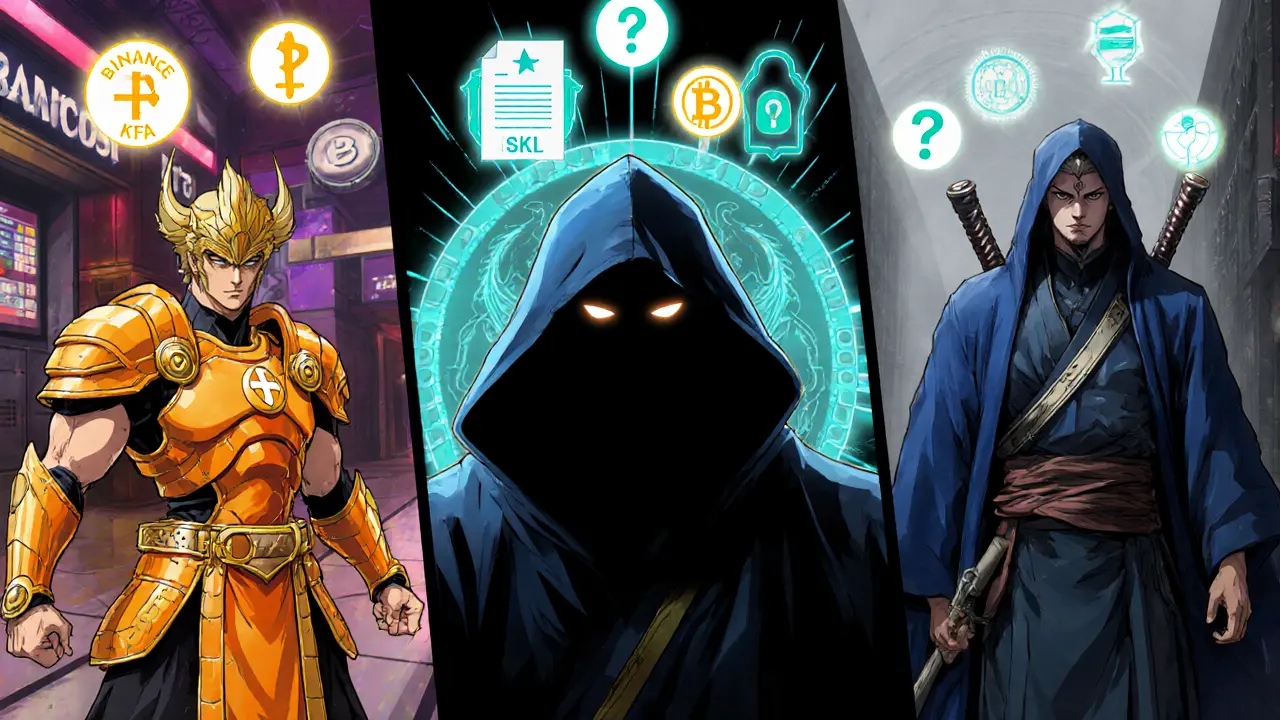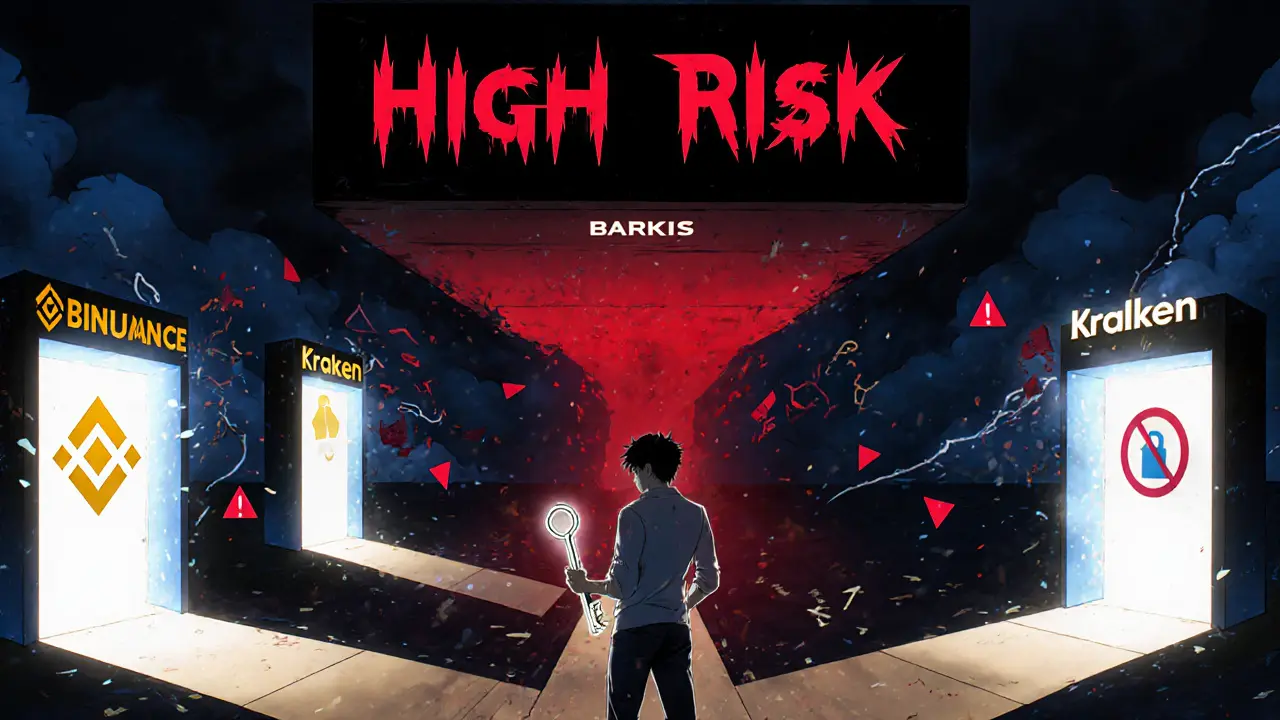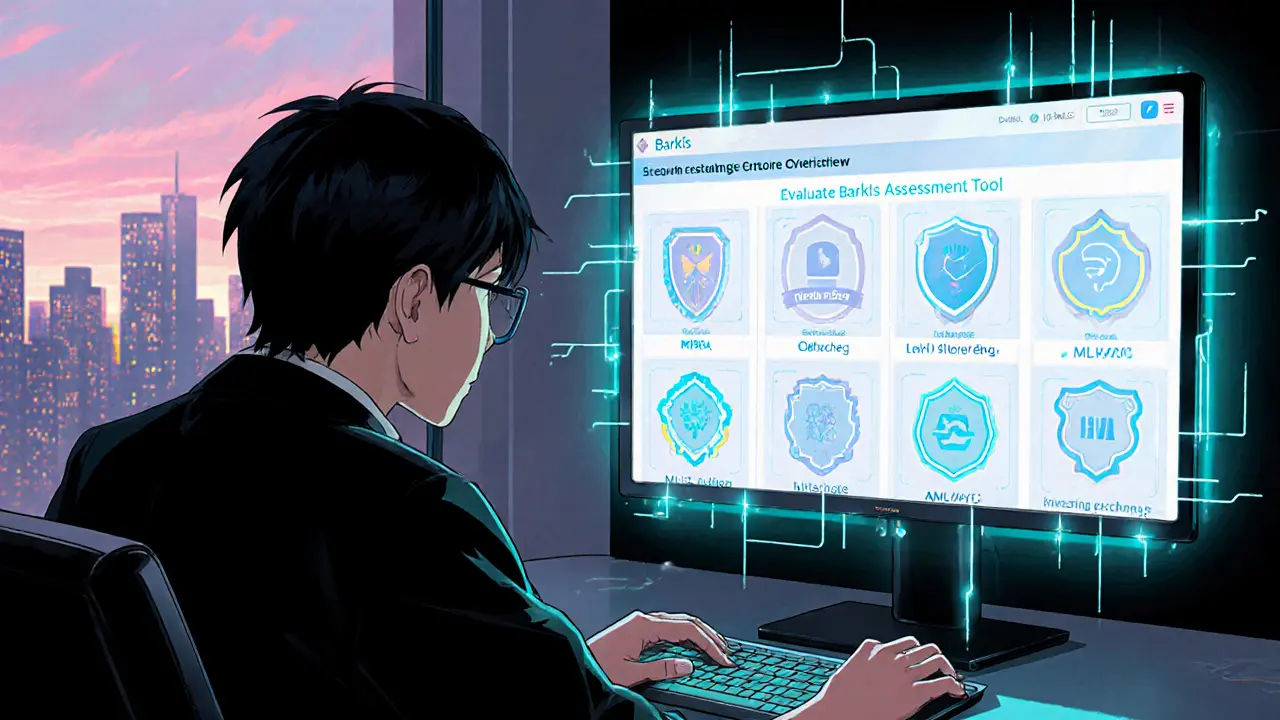Barkis Blockchain Exchange Risk Assessment Tool
Evaluate Barkis Blockchain Exchange against the following essential security criteria used by industry experts:
- Multi-Factor Authentication (MFA) Essential
- Cold Storage Essential
- SSL/TLS Encryption Essential
- AML/KYC Compliance Essential
- Third-Party Audits Highly Recommended
- Regulatory Licensing Highly Recommended
Rate each security criterion for Barkis Blockchain Exchange. Your inputs will determine the overall risk level.
When a new name pops up in the crowded world of crypto trading, the first question most of us ask is: *can I trust it?* The buzz around Barkis Blockchain Exchange has been minimal, which makes a thorough review even more crucial. Below you’ll find a step‑by‑step framework to evaluate this platform, practical checklists you can copy‑paste, and a side‑by‑side look at how it stacks up against the industry leaders.
TL;DR
- No public information on licensing, audit reports, or user feedback for Barkis.
- Any reputable exchange should offer MFA, cold storage, SSL encryption, and AML/KYC compliance.
- Use the due‑diligence checklist provided before depositing any funds.
- Compare Barkis with at least two established exchanges on security, fees, and support.
- If critical data is missing, consider safer alternatives.
What is Barkis Blockchain Exchange?
Barkis Blockchain Exchange is marketed as a cryptocurrency trading platform that claims to support major digital assets, spot trading, and a proprietary liquidity pool. It launched sometime before 2024, but there are no verifiable press releases, regulator filings, or third‑party audit links that can be found in public databases. This lack of traceable information is the first red flag for any prospective user.
Why a Review Matters
Crypto exchanges have become prime targets for hackers, fraudsters, and regulatory crackdowns. According to a 2023 industry report, firms that skipped comprehensive security audits faced an average loss of $12.4million. A review helps you spot gaps before they become costly mistakes.
How to Assess Any Crypto Exchange
Regardless of the brand, a solid evaluation follows a consistent set of criteria. Below we outline the essential pillars, each linked to an entity that you’ll see annotated with microdata.
- Multi‑factor authentication (MFA) - the second line of defense beyond passwords.
- Cold storage - offline wallets that keep the bulk of user assets away from internet threats.
- SSL encryption - protects data in transit between your browser and the exchange.
- AML/KYC procedures - ensure the platform complies with anti‑money‑laundering laws.
- Third‑party security audit - independent verification of code and infrastructure.
- Regulatory licensing - a legal permit to operate in specific jurisdictions.
Security Standards Every Credible Exchange Must Meet
Let’s break down the six pillars above with concrete examples you can look for on an exchange’s website or in its documentation.
- MFA: Look for support of authenticator apps, hardware security keys (e.g., YubiKey), or biometric verification. The strongest method combines something you know (password) with something you have (key).
- Cold storage: Reputable platforms store at least 95% of user funds in offline vaults, often using multi‑sig hardware modules. Check for statements like “99% of assets held in geographically distributed cold wallets.”
- SSL encryption: A simple way to verify is the padlock icon in the URL bar and a certificate issued by a trusted authority (e.g., DigiCert). Some exchanges also publish their TLS version - you should see TLS1.3 or higher.
- AML/KYC: Look for a clear onboarding flow that asks for government‑issued ID, proof of address, and possibly a selfie. Platforms operating in the EU must comply with the 5AMLD directive; US‑based services need a BitLicense or equivalent.
- Third‑party audit: Companies such as CertiK, Hacken, or Quantstamp regularly publish audit reports. The report should include scope, findings, and remediation status.
- Regulatory licensing: Valid licenses are typically listed on the footer of the site with a link to the regulator’s registry (e.g., FCA, ASIC, MAS).

Regulatory Landscape in 2025
Since 2023, global regulators have tightened the net around crypto trading. The EU’s MiCA framework, the US’s revised Treasury guidance, and Asia‑Pacific’s new digital asset licenses all require exchanges to implement robust AML/KYC, consumer protection, and capital adequacy measures. Failure to meet these norms can result in fines exceeding $100million or forced shutdowns.
Due‑Diligence Checklist for Barkis
| Criteria | What to Look For | Status (If Known) |
|---|---|---|
| Licensing | Official registration number, regulator name, public registry link | Not publicly disclosed |
| MFA Options | Authenticator app, hardware key, biometric support | Unclear |
| Cold Storage Ratio | Percentage of assets stored offline, multi‑sig architecture | Unverified |
| SSL/TLS Level | HTTPS with TLS1.3, valid certificate issuer | HTTPS present; TLS version not specified |
| KYC/AML Process | Document verification, source‑of‑funds check, compliance partner | No public documentation |
| Third‑Party Audit | Audit report link, auditor name, date, remediation notes | Absent |
| Customer Support | Live chat, ticket system, response time SLA | Live chat exists; response metrics not disclosed |
| Fee Structure | Transparent maker/taker fees, withdrawal fees, any hidden costs | Only basic fee table on site; details sparse |
Fill in the “Status” column as you gather info. If several rows stay “Not disclosed,” treat the platform as high risk.
How Barkis Stacks Up Against Established Exchanges
| Feature | Barkis Blockchain Exchange | Binance | Kraken |
|---|---|---|---|
| Licensing | None visible | Malta & Cayman, etc. | US & EU licenses |
| MFA | Unclear | App + SMS + YubiKey | App + Email + Biometrics |
| Cold Storage % | Unknown | ~98% | ~99% |
| Audit History | No public reports | CertiK 2023, Hacken 2024 | Quantstamp 2022, Deloitte 2023 |
| AML/KYC | Not documented | Full ID verification | Full ID verification |
| Support Channels | Live chat only | 24/7 live chat, phone, email | 24/7 live chat, email |
The table shows where Barkis is silent. Transparency is a cornerstone of trust; without it, you’re flying blind.
Red Flags to Watch For
- No verifiable corporate entity or address.
- Missing regulatory numbers or SSL details beyond the basic HTTPS badge.
- Absence of third‑party audit reports despite claiming “high security.”
- Customer‑support claims that cannot be tested (e.g., “24/7” but no phone line).
- Fee schedule that hides withdrawal costs behind “network fees.”
User Experience & Support (What You Can Test Now)
Even without full data, you can try a few low‑risk actions:
- Create an account using a disposable email.
- Attempt the KYC flow - note how many documents are required and whether the process asks for unnecessary personal data.
- Send a tiny test transaction (e.g., $10 worth of USDC) and monitor the withdrawal speed.
- Contact support with a simple query; measure response time and tone.
Final Verdict
Because there is no public record of licensing, audit, or user feedback, Barkis Blockchain Exchange remains a high‑risk proposition. The best practice is to treat it as a “black box” until the operator publishes verifiable security documents, regulatory approvals, and third‑party audit results. In the meantime, stick with exchanges that openly display these credentials.

Frequently Asked Questions
Is Barkis Blockchain Exchange licensed?
Public information about a licensing authority or registration number for Barkis is not available. Without a verifiable license, users face legal and financial uncertainty.
What security features should I look for?
Key features include multi‑factor authentication, cold storage of the majority of assets, SSL/TLS1.3 encryption, AML/KYC compliance, regular third‑party audits, and clear regulatory licensing.
How can I test an exchange safely?
Create a throwaway account, complete a minimal KYC check, and send a very small amount of crypto (e.g., $5‑$10). Observe withdrawal times, fees, and support responsiveness before committing larger sums.
Are there any known hacks involving Barkis?
No reported security incidents have been publicly disclosed, but the absence of any incident reports could also mean the platform’s activity is too low‑profile to attract attention.
Should I use Barkis for long‑term storage?
Given the lack of transparent cold‑storage policies and third‑party audit data, it’s safer to keep long‑term holdings in a personal hardware wallet rather than on Barkis.


19 Responses
Listen up, folks – this Barkis circus is waving a red flag so bright you’d think it’s a beacon for the lost. The whole lack of licensing feels like a magician performing tricks behind a curtain. No audit trail, no regulatory backing, just empty promises. If you value your hard‑earned crypto, steer clear until they actually prove they can lock the vault doors. Otherwise you’re just handing your keys to a stranger in a dark alley.
What they don't tell you is that every time an unnamed exchange pops up, it's usually a smokescreen for covert data siphoning. Look at the missing KYC details – that's how the deep state funnels untraceable funds into shadow accounts. The whole thing smells like a front for something far darker than just a trading platform.
Alright, let’s break this down step by step because the reality of Barkis is far more nuanced than the headline scares would have you believe. First, the absence of a publicly listed regulator-whether in the EU, the US, or a recognized offshore jurisdiction-means there is no third‑party oversight to enforce capital adequacy or consumer protection standards. Second, without a verifiable audit report from a reputable firm such as CertiK or Quantstamp, we have no assurance that the codebase has been scrutinized for backdoors or vulnerabilities that could be exploited. Third, the claim of multi‑factor authentication is vague; offering “authenticator app” without specifying hardware key support like YubiKey reduces the potential security posture dramatically. Fourth, the cold‑storage ratio is simply listed as “unknown,” which contrasts sharply with industry leaders who proudly publish figures like 98‑99% offline storage, often with multi‑sig hardware modules.
Fifth, the TLS implementation is mentioned merely as HTTPS, with no explicit TLS version; this opens a window for downgrade attacks if the server does not enforce TLS 1.3. Sixth, the AML/KYC process is not documented, which is a red flag given that regulators worldwide have tightened on money‑laundering compliance-think of the FATF’s Travel Rule and the EU’s AML directives. Seventh, the support infrastructure relies solely on a live‑chat widget, lacking phone or ticketing systems that would provide traceable response metrics. Eighth, the fee schedule is thin; opaque “network fees” can hide exorbitant withdrawal costs, something that vigilant traders should never ignore.
Lastly, the user experience-while aesthetically clean-does not compensate for the multitude of structural deficiencies. In the grand scheme, the lack of transparency across licensing, audits, cold storage, and compliance makes Barkis a high‑risk proposition that is best avoided until concrete evidence of security and regulatory adherence is presented.
Honestly, the whole Barkis hype is just another example of a crypto startup trying to sound legit without any solid backing. They brag about “proprietary liquidity” but give you zero proof of where that liquidity actually resides. It’s classic smoke‑and‑mirrors, and anyone buying into it is just feeding the illusion.
😂 Yeah, the “proprietary liquidity” sounds fancy until you realize it’s probably just a marketing buzzword. Even the live‑chat feels like an automated bot that never actually solves anything. If you’re looking for real security, you might as well stick with exchanges that publish their audit reports on their homepage. 🙄
So you’re saying they have a live‑chat that pretends to help? That’s like putting a Band‑Aid on a broken pipe and calling it a solution. Honestly, I’d rather talk to a toaster than rely on that kind of “support”.
Take a step back and look at the bigger picture – if an exchange can’t be transparent about its core security practices, it’s safer to keep your assets elsewhere. Protecting your funds should be the top priority.
It’s understandable to feel uneasy when the details are scarce. Many users find comfort in platforms that openly share their compliance steps and security measures. Trust is built through openness.
Stay safe and do your own research
i think its impotant to be critcally aware of the lack of data its corressive and we should think we need more info to make a decent decision
The aggressive stance on security is non‑negotiable – if a platform can’t show its licenses, you’re basically handing over control to an unknown entity. No compromises.
Agreed. It is essential to verify the regulatory credentials before committing any capital. Transparency fosters confidence and reduces risk exposure.
This whole thing feels like a badly written plot twist.
Sure, if you enjoy living on the edge of a potential rug pull, go ahead. For the rest of us, it’s just another cautionary tale.
From a balanced viewpoint, the lack of audit documentation outweighs any superficial marketing claims they make.
Looking at the checklist, the most glaring gaps are licensing and third‑party audits. Without those, any other positive feature becomes secondary. I'd recommend waiting for clear evidence before allocating funds.
Concise: missing licenses, no audits – skip.
Indeed, the omission of critical compliance documents is not merely an oversight; it is a fundamental breach of user trust, and it demands immediate scrutiny before any engagement.
When we examine the strategic calculus behind launching a platform like this, we must consider not only the technological underpinnings but also the regulatory scaffolding that supports sustainable operations. The omission of clear licensing information is akin to building a skyscraper without a foundation; it may appear impressive from the outside, yet it is inherently unstable. Moreover, the lack of third‑party audit reports eliminates a vital feedback mechanism that would otherwise validate the security posture of the system. Investors and users alike rely on such external verification to gauge risk; without it, the platform's credibility erodes rapidly. In addition, the ambiguous KYC procedures raise concerns about money‑laundering controls, especially given the heightened scrutiny from global financial watchdogs. Therefore, any prudent actor should demand comprehensive documentation before committing capital or entrusting assets to this exchange.